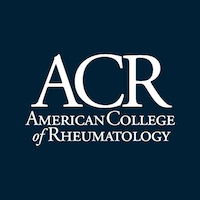ACR Issues Recommendations for Treatment of Gout
The recommendations put a strong focus on urate-lowering therapy for gout.

In an effort to update new clinical evidence on the treatment and management of gout, the American College of Rheumatology (ACR) released the 2020 Guideline for the Management of Gout.
The guideline provided an update from what was previously known about the condition in 2012. The ACR included 42 recommendations—16 strong—with a key focus on addressing standard-to-treat urate-lowering therapy due to its benefit for all patients with gout who are on the therapy. The aim of the guideline was to provide guidance for the management of gout, including indications for optimal use of urate-lowering therapy, treatment of gout flares, and lifestyle and other medication recommendations.
The ACR looked at new and emerging clinical evidence beneficial for treating patients with the condition, John FitzGerald, MD, PhD, said in a statement. The new guideline included expanded indications for starting urate-lowering therapy, more emphasis on the use of allopurinol as a first line agent for patients who require the treatment, and broad recommendations about who need HLA-B*5801 testing prior to starting allopurinol, Fitzgerald, a rheumatologist and 1 of the guideline’s co-principal investigators, continued.
The highlight of the update, based on data from newer clinical trials, was a strong recommendation to use a treat-to-target strategy with urate-lowering therapy for all patients with gout. The investigators suggested a management strategy that starts with a low-dose of a urate-lowering therapy medication and then raising the dosage to achieve and maintain a serum urate level of <6 mg/dL to optimize outcomes over a fixed-dose strategy.
FitzGerald and the investigators also expanded indications for starting urate-lowering therapy to conditionally consider patients with infrequent gout flares. The indication included patients after their first gout flare if they also have moderate to severe chronic kidney disease (stage >3), marked hyperuricemia (serum urate >9 mg/dL), or kidney stones. There was also a conditional recommendation against starting the therapy if a patient experienced their first flare without the listed comorbidities.
It was strongly recommended that patients with >1 subcutaneous tophi initiate the therapy over not. The team also strongly recommended that patients with radiographic damage attributed to gout start the therapy.
The team also made a strong recommendation to use allopurinol as the first-line urate-lowering therapy, including in patients with chronic kidney disease. What’s more, the guideline included a conditional recommendation for HLA-B*5801 testing before starting allopurinol for patients of Southeast Asian and African American descent who have a higher prevalence of HLA0B*5801. The investigators recommended against the testing in patients of other ethnic or racial backgrounds.
Concomitant anti-inflammatory prophylaxis therapy was strongly recommended over no anti-inflammatory prophylaxis. The investigators strongly suggested continuing prophylaxis for 3-6 months rather than <3 months, with an ongoing evaluation and continued prophylaxis as needed if flares persisted.
Although the team strongly recommended allopurinol as a first-line therapy, they strongly recommended against pegloticase as such a therapy. It was also conditionally suggested that before starting any uricosuric treatment, patients should not check urinary uric acid over checking it.
“As data continue to emerge supporting best practices in management, implementation of these recommendations will ideally lead to improved quality of care for patients with gout,” FitzGerald and the investigators wrote.
The “2020 American College of Rheumatology Guideline for the Management of Gout,” was published online on Arthritis Care & Research.